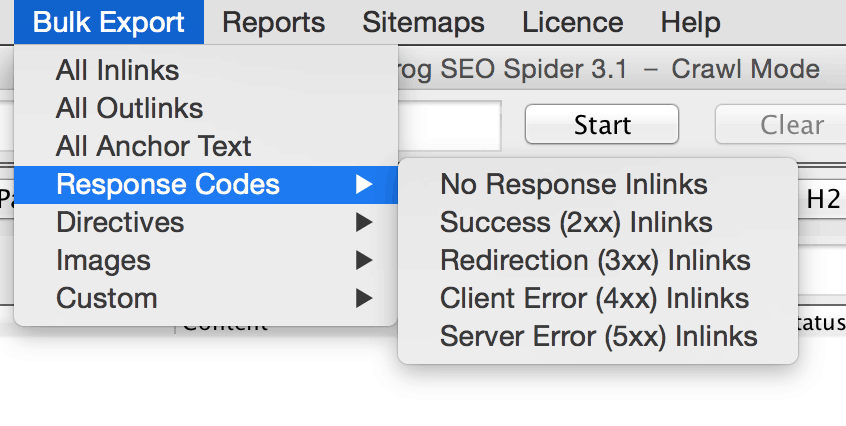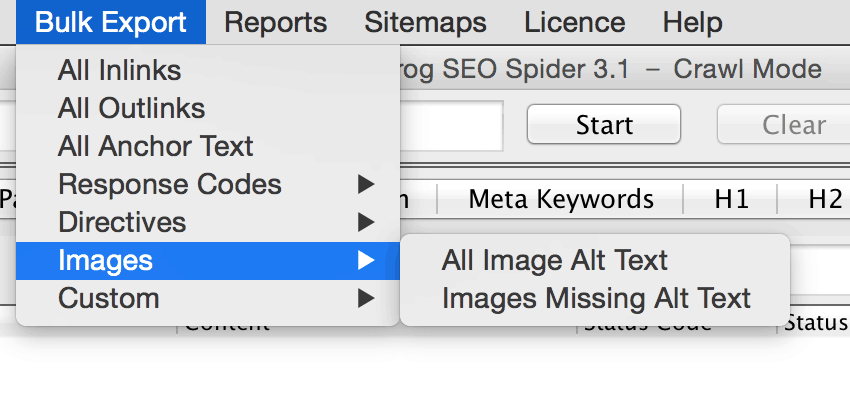Targeted traffic is the main thing that keeps every successful online business going. While we can get free targeted traffic from many sources, Search Engines have proven to be the most exciting source of traffic that converts the most.
Today, we have someone who’s got a firm grip on attracting search engine traffic and he’s here to share with us how his does this and the results he gets, and some interesting tips on SEO for beginners
Dennis Seymour of course is the man today. Let’s hear what he’s got for us so over to you buddy…
A little bit after mid 2014, I started to work on my company’s digital marketing and SEO blog.
I knew it was going to be a challenge right from the get go.
I’m in a niche where most of the competition has been doing it for a long time already. Factoring that it’s still rather small compared to other markets, that doubles the challenge because everybody competing will be on the top spots, let alone, the first 5 pages.
This makes the barrier for entry a lot harder for new websites like ours.
So I had to come up with a plan and stick with what I do best.
After 3 months, we got the site to double in traffic and it’s been growing ever since.

Before we start, please note that if you have any trouble with the terms I will be mentioning, please check out our digital marketing & SEO glossary over here. Hopefully, it’s there BUT if it’s not, let us know so we can add it in.
Take a look: SEO Marketing Services for Cosmetic Surgeons (5 tips to boost SEO)
How We Did It:
Obviously, the organic traffic shown above wasn’t that big. Compared to what you might see with other posts but you have to factor in that we relied solely on optimizing for search traffic with a new site that publishes 1–2 posts per month. The niche, though internet marketing is pretty popular, is not really a mainstream topic that the common person would search for.
We have a good enough conversion rate with the traffic that we got as to not bother with other ways to acquire clients.
We didn’t publish (yet) on high traffic publications nor were we featured in other sites.
We were new and we had to prove something first before we can earn the right to be acknowledged by others, right?
It was not easy but it definitely was not luck. We had to put in the work and I’ll show you how we did it.
Content Audit & Quick Wins
Normally, I would already have a plan in place even before the content creation process starts but in this case, I took over a bit late due to other projects, so I had to work with what I have.
We had existing content already on the site that’s specifically geared for those new to digital marketing. We wanted to have a Knowledge area where business owners or new marketers can use as reference to get them started in the online marketing world.
Now, what I need to do are:
- Collect all the existing Pages on the site
- Find what’s working and what’s not working
- Fix Quick Wins
- Fix them or Improve them
I’m a big advocate of keeping things simple. I can drag this out and correlate numbers for you but that’s going to freakin’ bore the heck out of you.
You’ll end up leaving Enstine’s blog and we don’t want that to happen!
So, let’s get started.
Collect all the Existing Pages and Problems on the Site
To collect the existing content on the site, I bring out my trusty Screaming Frog app and crawled the website.
Since the site was small, still under 100 pages, the free version of the app will do. It’s worth every penny though. Free alternative: Rob’s Crawler
After Screaming Frog Finishes it’s run, export the following results:

- General Export (the “Export” button at the top left besides the filter dropdown)
- Export your 404’s (Bulk Export -> Response Codes)
- Export your Images missing ALT text (Bulk Export -> Images)

Odds are, you’ll see empty titles and descriptions. You might even discover duplicates! You’ll probably discover images that aren’t optimized and broken links all around the site.
Find what’s working and what’s not working
Didn’t do keyword research before you created the content? Here’s a quick tip.
Head on over to Google Webmaster Tools.
Take a look at the “search queries” and arrange those with the highest impressions. With a single glance, you can see the keywords you are showing up for and where your average ranking is.
5000 impressions but you are at rank 9? 5542 impressions but you are rank 12? 120552 impressions but ranking at 18?
That means you are in-range and that traffic is almost within your grasp! You have to act and prioritize these pages.
For each keyword, Google will show you a URL that’s showing up. All you need to do now is to improve it and better optimize the page.
Fix Quick Wins
Meta Title
Since you now have the data, let’s start by fixing the meta titles.
Each URL should have a title less than 65 characters.
One of the main reasons is that you don’t want Google to cut off your title in the search results. You want the searcher to see your full title.
Meta Description
Keep this less that 155 characters. Much like the title, you want this to be optimized and not cut off when Google shows it. A good description and title can get you more clicks sometimes, even if you are a few spots lower than #1.
Be sure that you keyword is used in both the title and description. If it’s grammatically wrong, don’t force it. Break the phrase up and make it correct.
Broken Links
Open the 404 CSV file. Look at the broken links and redirect them to the correct one. If it’s an old post and the place you are linking to isn’t there anymore, then update the link or remove it.
Internal Linking
This is also an on-going thing that you need to do. Internal linking serves a lot of purposes.
One of the important reasons why you need to do this is that you can lead other people to different pages. They stay longer on your site and they get to discover your other posts.
Another is that it passes relevance and much like link building, Google can see the anchor text you use but it also can see the words surrounding the link.
When you publish new posts, you can update older posts to link to the new post as long as it’s relevant.
Obviously, you can’t go crazy with it and just blindly abuse it.
I showed an example about internal linking using your blog here.
Note: Internal Linking within the menu OR using a related post plugin are good BUT it can never beat the value of the link within the text body.
External Linking
Do NOT feel bad about linking to other relevant pages. Besides giving you an “excuse” to build real life relationships with others in the same niche, you give Google a signal that you link only to quality resources.
Remember this: Don’t link to competitors competing with you on the front page for the same keyword. IF you really have to, just link to their home or about page.
Permalinks
Is the keyword in the URL? It would be great if you already did that. If not, then you might want to change the post URL but be sure to set up a 301 redirect, especially if the page has backlinks pointing to it.
Image Optimization
Check your spread sheet. Look for the pages that use the image. Add in the ALT text using the main keyword or keyword phrase.
For further optimize this, you can make sure the filename of the image is optimized for the keyword or use a related phrase.
I highly suggest that you also add a title for the image.
Optimize the format of the image as well. Something like Smush.it can easily fix those images for you.
In WordPress, you can already do these very easily.
No-Index Worthless Pages
If you have been blogging for a while now, then you probably built a big database of tags. Click on one of them.
See how worthless they are? You might want to no-index them.
Category Page
Category pages can be really useful depending on the niche. If you can customize and add content here, then please do so. IF for some reason, you just can’t add anything unique on the category page, then just no-index them.
Get My Bonus Template Here
Grab my Spreadsheet to help you keep track of your content.
It’s always easier to do internal linking and keyword targeting if you have a list.
That way, you can do just a few at a time and know where you left off. You won’t get stuck.
Fixing or Improving the Pages
Improve your Content
So you look at your Webmaster Tools and see your content ranking low.
Take a look at your competitors and compare your content. See the problem? It’s probably not better than those above you. Sometimes their site just has a lot more authority but don’t let that be an excuse. You can still beat them.
See how you can improve your content. I would suggest that you do a little keyword research (Google’s Ad Planner is more than enough, it will even group the keywords for you) to find other keywords that are directly related to this keyword you are optimizing for. Use some keyword phrases into the article. As old school as that might sound, it’s relevant. It’s not like you are going to be spammy with it right? Just be sure it fits in the content and not force it in there. (Cyrus made a very clear explanation here on this post.)
Google can easily determine and categorize topics now very easily so nudging them with some optimization tactics will give you an edge.
From here, you can increase the length, cover more related sub topics, add more media, show graphs/stats and so on.
Basically, you need to be evergreen. You want people to keep coming back to your post years later. You want people to make it a resource. It needs to be relevant long term.
Improve the Experience For Your User
You want people to engage and like your content. You do this by giving them a great experience when reading it.
This can be using images that fit the situation, arranging your header tags to emphasize certain points, maybe add in a table of contents area to make it easier to navigate and link to relevant articles in your site.
Handle All Webmaster Tools Suggestions
Check out the HTML Improvements area of your webmaster tools. Be sure to fix all the problems in there.
That’s it! The next thing we did was to lay out an editorial calendar for the rest of the year and make sure each post that goes out are up to standard. We’ve gotten some good visibility from that so far.
From there, promotion and link building became the focus.
Bonus Round: What Else Can You Do?
- Is your site image-heavy? If so, consider paying for a CDN but be sure you set it up properly.
- Add breadcrumbs at the top for easy navigation and visible “siloing” (I don’t like the term but it’s the popular term for this.)
- Make sure you have HTML and XML sitemaps (Geo Sitemap for local) plus the general static pages.
- Set Up Organization Schema (I’ll have a plugin out for this soon, so keep an eye on the LeapFroggr blog or newsletter.)
- Consider switching to HTTPS. There, I said it. I have to admit, we had a nice bump in traffic (it almost tripled) and impressions right after we made the switch late 2014 but obviously, the verdict for that is still up in the air.
- Read more SEO strategies here.
- Sign up for our newsletter to get more tips in the future. We just sent out a cool Scrapebox (white hat) tip this week to our subscribers.
A lot of the best practices for your blog’s SEO is already up there. So go do that audit now and you’d be amazed at what you’d find.
Lastly, do not use blogging only for SEO purposes. There are a lot of more profitable ways for you to benefit from your blog and SEO is just one of the means to get there.
I’m sure a lot of you reading this have been blogging for years and never considered auditing your website. This process will definitely help you out.
Remember, the example is from a very specific niche yet it’s in a very competitive market.
In your case, your blog might not be in such a very competitive situation.
That means only 1 thing. If a no authority site like ours can get a 100% bump, you can probably do 1000%.
Keep hustling, you’ll get there soon.

Author Bio:
 Dennis Seymour is the lead SEO for LeapFroggr Inc, a digital marketing & SEO company based in the Philippines. Say hi to him on his personal blog, Twitter, Google+, Pinterest and Instagram.
Dennis Seymour is the lead SEO for LeapFroggr Inc, a digital marketing & SEO company based in the Philippines. Say hi to him on his personal blog, Twitter, Google+, Pinterest and Instagram.

Comments are closed.